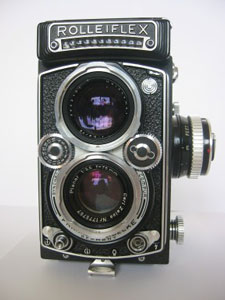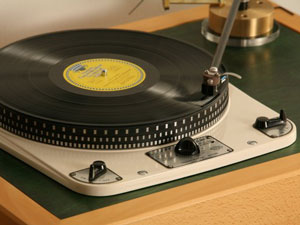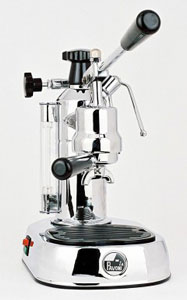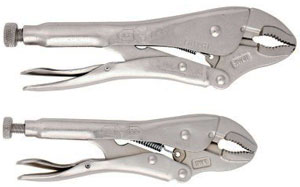What do an iPad, Canon 5D Mark III and new car have in common? They’re products of the digital world and therefore boring compared to the old-fashioned technique of mechanical, analog toys. Even women become a minor matter when men can play with and touch toys they love, just to mention vinyl turntables, steely tools and… analog cameras.

Classic things not only impress with clear form, such as a bicycle, an espresso machine, a chair. Contemporary art — think iPad — is too encapsulated in comparison. It’s distant, you can’t even open these device, let alone fix them by yourself. If you still do, you probably break them. They remain miracles that are only understood as a user interface.
Men especially are longing for a world that can be — quite literally — felt. The manual component of touching is elementary. Nice things make you feel good. Or why is it that in it’s marketing of the latest iPhone, Apple emphasizes not only the technical advancement of the device, but the “level of precision you’d expect from a finely crafted watch, not a smartphone.”

Fujifilm calls it the X-DNA: clean, serious lines and old-school ergonomics. That’s what analog design is all about.
Technology is as much about technology as it is about aesthetic purity. People want to feel something, whether it is soil between their hands or the shutter of a camera.
Take the old camera, a machine allowing you to set the focus. You see the lens shutter. You understand how things work, how the machine operates. The digital device leaves you clueless.
The analog camera is the love for the honest product. It’s photography stripped down to a function’s bare essentials. Like a bicycle. You don’t need no 35-gear speeder. One gear is enough. It will be harder to get on top of that mountain. But that’s part of the experience.

The love for classic things, however, shouldn’t reach the level of blind adulation, not to mention a religious sphere. Idolization wouldn’t properly enjoy the easy-going, relaxed attitude that’s inherent in these finely crafted products.
Nearly all analog cameras are marvels of precision engineering with an absolutely own visual language. With many you almost automatically produce art.
The result is completely different from the images of the digital era, all of which are produced with more or less the same equipment and therefore look confusingly similar.

Everything beeps and blinks, the whole car is full of electronic gadgets.
When customers say, “What are you doing to me, I do not want all of this,” their love for classics becomes a rebellious stance.
People do not only want functional, they want beautiful, worthwhile things; a yearning that’s ignored by most engineers and product designers.

There’s no reason to worry about the vintage scene, however. The existing originals have a perpetual fascination potential and are so durable that even new generations will discover these beautiful and indestructible classics.


